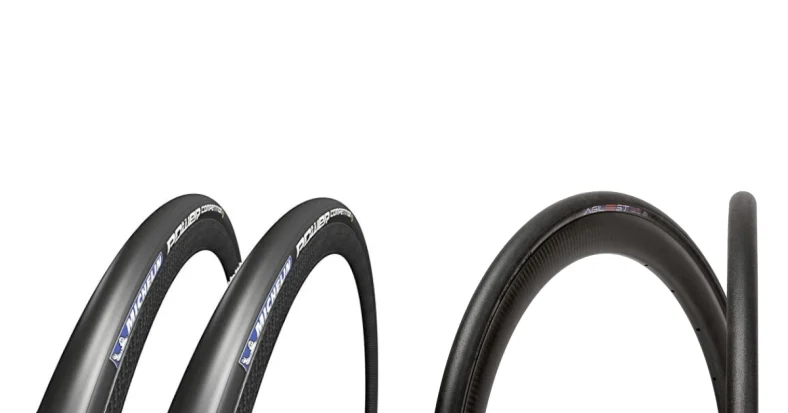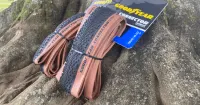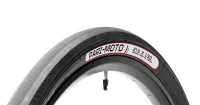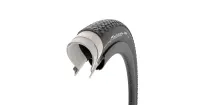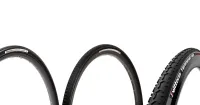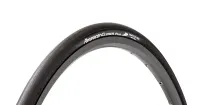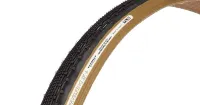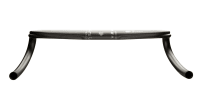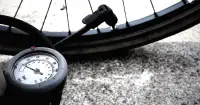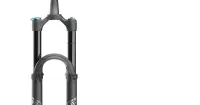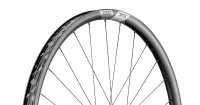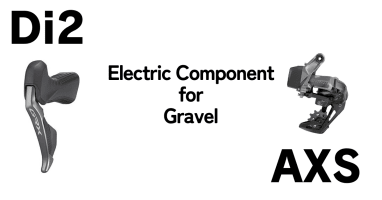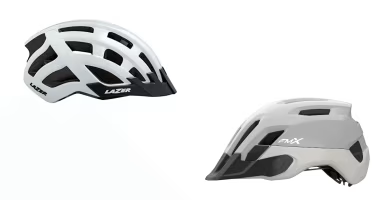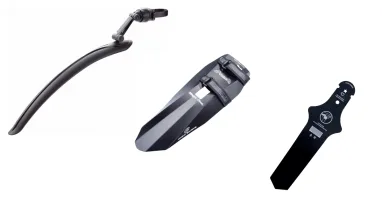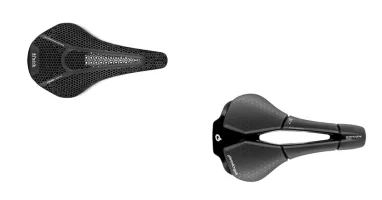Language Menu
- 日本語
- English
Is tubeless the best? Which type of gravel tire is best?
Tire selection is one of the most enjoyable and difficult aspects of gravel bike customization. In this article, we will look at the differences between tire types and the types of tires to choose for your gravel bike, along with their advantages and disadvantages.
Modified at: 2023.7.4Posted at: 2022.9.13
Table Of Contents
- Different types of tires that can be mounted on gravel bikes
- Advantages and disadvantages of choosing clinchers on gravel bikes
- Advantages of choosing a clincher
- Disadvantages of choosing clinchers
- Advantages and disadvantages of choosing tubeless ready for gravel bikes
- Advantages of Tubeless Ready
- Disadvantages of choosing tubeless ready
- Why tubeless and not tubeless ready?
Different types of tires that can be mounted on gravel bikes
There are four types of tires that can be mounted on gravel bikes, as follows
- Clincher (Tubed)
- Tubular
- Tubeless
- tubeless ready
The difference between each is “how they hold air”: clinchers have an inner tube, tubulars have a tube inside the tire, and tubeless and tubeless-ready are forms that hold air directly inside the tire without a tube.
Of these, the clincher and tubeless ready are the ones chosen for gravel bikes.
Advantages and disadvantages of choosing clinchers on gravel bikes
Clincher tires are the most popular tire type, used not only on gravel bikes, but also on road bikes and other sport bicycles, as well as bicycles in general.
Advantages of choosing a clincher
The advantage of clinchers is that they are easy to maintain.
If you get a flat tire, simply change the tube and inflate it, and you are ready to ride. If it is a sports bicycle, the wheel can be easily removed, so even beginners can easily change the tube.
Also, even if you forget your tube, there is no bicycle store nearby that cannot repair a punctured clincher tire, so you can rest assured that even in an emergency, you will be able to find somewhere to deal with the problem.
Disadvantages of choosing clinchers
On the other hand, the disadvantages of clinchers are the power loss caused by friction between the tire and tube, and the need for higher air pressure.
In a clincher tire, the tube expands inside the tire to hold air, but because they are separate parts, there is inevitably friction between the tire and tube. The friction generated generates heat, which directly leads to power loss.
In addition, tires that are narrower (compared to MTB tires), such as those installed on gravel bikes, can cause “rim-striking punctures,” which occur when low air pressure pinches the tube and the wheel rim. For this reason, it is standard practice to use high pressure with clincher tires. However, high pressure inevitably causes the tire to receive vibrations from the road surface directly, resulting in a bouncy ride that is not comfortable.
Advantages and disadvantages of choosing tubeless ready for gravel bikes
Tubeless ready bikes were originally introduced on MTBs. In the past few years, road and gravel bikes have also been rapidly adopting tubeless-ready tires.
Tubeless-ready tires do not have a tube inside, but instead contain a fluid called sealant. This fluid prevents air from leaking through the gaps in the tire, and as a result, the tire can hold air without a tube. Tubeless tires do not need sealant either. The mechanism is the same, but the lack of sealant makes the tire lighter.
Advantages of Tubeless Ready
The advantages of choosing tubeless-ready bicycles are the ability to reduce air pressure and the resistance to punctures. Both of these are areas where “gravel bikes benefit greatly”.
Tubeless-ready tires are physically free from “rim-punctures” due to the absence of a tube. The purpose of high tire pressure on a road bike is to increase rolling resistance, but it is also to avoid "rim punctures. In the case of tubeless-ready bikes, lower air pressure can improve riding comfort by providing cushioning to the tire.
Another is to resist punctures. First of all, there is zero tube-derived punctures because there is no tube structurally. In addition to that, sealant is injected inside, so even if there is a hole in the tire, the sealant will fill it if it is a small hole.
Kits to fill holes for tubeless tires are also available, so even on long rides, it is possible to repair a puncture to some extent, which also enhances the running performance in terms of punctures.
Disadvantages of choosing tubeless ready
The disadvantages of tubeless-ready bicycles are cost and maintenance.
First of all, to go tubeless ready, you need the following parts that are compatible with tubeless ready.
- wheels
- tire
- sealant
- valve
These parts are more expensive than clinchers, generally 20-30% more expensive.
In addition, maintenance of tubeless-ready tires is obviously a hassle, as sealant needs to be injected periodically, a compressor may be needed to raise the tire bead, and the sealant may not hold air properly depending on the compatibility of the wheel and tire.
If a tire gets a flat tire on the road, it must be inflated while covered in sealant, and it cannot be repaired quickly like a clincher.
Why tubeless and not tubeless ready?
You may be thinking, "Why not just go tubeless instead of tubeless ready? You might think, "Why not just go tubeless?
There are two reasons why tubeless ready is better for gravel bikes. The first is that there are only a few types of tubeless bikes, and the second is that sealant should be used if you are going to ride on unpaved roads.
The first major reason is that there are only a few types of tubeless tires. This is true not only for tire types but also for wheel types. Currently, the majority of tubeless wheels on the market are tubeless-ready.
Since tubeless can only be used on tubeless wheels (tubeless ready can also be used on tubeless wheels), the choices are limited and the wheels are more expensive.
The advantage of tubeless tires is that they do not require sealant, but gravel bikes are ridden on unpaved roads and punctures are assumed to be present. Therefore, you are more likely to put in sealant whether you are riding tubeless or not.
If you are going to put sealant in anyway, it is more cost-effective to choose a tubeless-ready bike, which has a wide variety of sealant types.
Let's master gravel tires!
Gravel tires are a characteristic of gravel bikes. One of the interesting aspects of gravel bikes is that depending on what tires are set and at what air pressure, the ride and comfort can vary greatly.
Advantages of MTB tires on gravel bikes and how to choose them
Gravel tires are getting fatter every year, but MTB tires are still the best choice for serious dirt road riding. The following is a summary of the advantages of installing MTB tires on gravel bikes and how to choose the right ones.
Choosing Gravel Tires for Road Bikes
Even if your road bike is mainly used for riding on paved roads, you can enjoy gravel riding by installing gravel tires. In this issue, we have compiled a list of gravel tire selection and precautions for road bikes.
How to choose gravel tires for those who just want to go fast
Gravel bikes are said to be slower than road bikes. If you want to go faster on a gravel bike! If you want to go faster on a gravel road bike, you can make it lighter and faster by simply customizing the tires.
The Perfect Guide to Choosing Gravel Tires
One of the most fun and most affordable customizations for gravel bikes is changing tires. However, gravel bikes, by their very nature, are also the most difficult to choose tires for. In this article, we will thoroughly explain how best to choose tires for gravel bikes.
ETRTO standards for 650B tires and their inch counterparts
Many gravel bike riders love 650B tires. However, when looking for a 650B tire, the various size designations can be confusing. In this article, we will look at the different size designations for 650B tires and check each designation with its corresponding chart.
Current Article
Is tubeless the best? Which type of gravel tire is best?
Tire selection is one of the most enjoyable and difficult aspects of gravel bike customization. In this article, we will look at the differences between tire types and the types of tires to choose for your gravel bike, along with their advantages and disadvantages.
What is a gravel tire? Definition of Gravel Tire
Gravel tires are rapidly gaining popularity in the road bike community. What is a gravel tire and how is it defined?
Which type is best? Get to know the different types of gravel tires.
Gravel tires are in between the properties of road tires and MTB tires, and there is a lineup of tires with both properties. In this issue, we will introduce the different types of gravel tires and how to choose and customize them for different uses.
Advantages and disadvantages of slick tires on gravel bikes
Slick tires are the standard for road bikes on paved roads. We have summarized the advantages and disadvantages of daring to install slick tires on gravel bikes, which are often equipped with knobbed gravel tires.
Why so many gravel bike users love tubeless tires? Advantages and disadvantages
One of the most popular customizations for gravel bikes is to convert the tires to tubeless. The following is a summary of the advantages and disadvantages of tubeless and why it is a favorite on gravel bikes.
Easily convert your bicycle to gravel bike
Gravel bikes are often bought from manufacturers who sell them as "gravel bikes," but it is also possible to customize a road bike or cross bike and "gravel bike-ize" it.
How to convert a hybrid bike into a gravel bike
Hybrid bikes and gravel bikes are similar in concept. Hybrid bikes can be converted to gravel with little replacement cost, depending on the component parts.
Choosing Gravel Tires for Road Bikes
Even if your road bike is mainly used for riding on paved roads, you can enjoy gravel riding by installing gravel tires. In this issue, we have compiled a list of gravel tire selection and precautions for road bikes.
Which type is best? Get to know the different types of gravel tires.
Gravel tires are in between the properties of road tires and MTB tires, and there is a lineup of tires with both properties. In this issue, we will introduce the different types of gravel tires and how to choose and customize them for different uses.
Current Article
Is tubeless the best? Which type of gravel tire is best?
Tire selection is one of the most enjoyable and difficult aspects of gravel bike customization. In this article, we will look at the differences between tire types and the types of tires to choose for your gravel bike, along with their advantages and disadvantages.
How to choose a handlebar for a gravel bike
Gravel bikes look almost the same as road bikes, but their purpose is somewhat different. The following is a summary of how to select handlebars, which are important for the operation and position of the bike.
How to Choose Sprockets for Gravel Bikes
Among the customizations for gravel bikes, one of the easiest even for beginners to do and with relatively little impact on the ride is to change the sprocket. In this article, we have compiled a list of sprocket selection methods unique to gravel bikes.
How to choose gravel tires for those who just want to go fast
Gravel bikes are said to be slower than road bikes. If you want to go faster on a gravel bike! If you want to go faster on a gravel road bike, you can make it lighter and faster by simply customizing the tires.
Optimizing handlebar position on gravel road bikes
The handlebar position of a gravel bike is similar to that of a road bike but somewhat different. The following is a summary of the concept of handlebar position and how to achieve the optimal handlebar position.
Why so popular on gravel bikes? Advantages and disadvantages of flared handles and how to choose
Flared handlebars are being increasingly adopted on gravel bikes. We will look at what flared handlebars are and why they are so popular, starting with their advantages and disadvantages.
The standard for gravel bikes! Tubeless Guide
Tubeless tires, which can reduce puncture risk and increase ride comfort, are a staple of gravel bikes. This is a guide on how to choose and operate tubeless tires.
Current Article
Is tubeless the best? Which type of gravel tire is best?
Tire selection is one of the most enjoyable and difficult aspects of gravel bike customization. In this article, we will look at the differences between tire types and the types of tires to choose for your gravel bike, along with their advantages and disadvantages.
Why so many gravel bike users love tubeless tires? Advantages and disadvantages
One of the most popular customizations for gravel bikes is to convert the tires to tubeless. The following is a summary of the advantages and disadvantages of tubeless and why it is a favorite on gravel bikes.
Ride more comfort! Ride gravel bike with proper air pressure!
There is a "proper air pressure" for bicycle tires. This section summarizes what the correct air pressure is, how to check it and how to get the correct air pressure, and the changes in riding that can be achieved by changing the air pressure.
The Perfect Guide to Choosing Gravel Tires
One of the most fun and most affordable customizations for gravel bikes is changing tires. However, gravel bikes, by their very nature, are also the most difficult to choose tires for. In this article, we will thoroughly explain how best to choose tires for gravel bikes.
Which type is best? Get to know the different types of gravel tires.
Gravel tires are in between the properties of road tires and MTB tires, and there is a lineup of tires with both properties. In this issue, we will introduce the different types of gravel tires and how to choose and customize them for different uses.
Customization for comfort on rough roads
Gravel bikes on gravel roads, for example, are subject to more vibration and shock from the road surface than those on paved roads. Optimizing for rough roads can make riding more comfortable.
Advantages and disadvantages of suspension and seat post on gravel bikes
When riding a gravel bike over rough terrain like MTB, you want suspension. An easy way to add suspension to your gravel bike is with a suspension seatpost.
How to add suspension to a gravel bike
Gravel bikes can be ridden on unpaved roads, but the basic standard is a "rigid fork" without suspension. In this article, we summarize how to add suspension to a gravel bike without suspension.
How should you decide on a position for a gravel bike, which is intended to be between a road bike and a MTB?
Why so popular on gravel bikes? Advantages and disadvantages of flared handles and how to choose
Flared handlebars are being increasingly adopted on gravel bikes. We will look at what flared handlebars are and why they are so popular, starting with their advantages and disadvantages.
How to customize a gravel bike with MTB wheels and how to choose
Gravel bikes can also enjoy MTB-like riding with fat tires. If you are going to enjoy riding on rough roads, one way to have fun is to customize it with MTB wheels to make it more MTB-like.
The Perfect Guide to Choosing Gravel Tires
One of the most fun and most affordable customizations for gravel bikes is changing tires. However, gravel bikes, by their very nature, are also the most difficult to choose tires for. In this article, we will thoroughly explain how best to choose tires for gravel bikes.
Current Article
Is tubeless the best? Which type of gravel tire is best?
Tire selection is one of the most enjoyable and difficult aspects of gravel bike customization. In this article, we will look at the differences between tire types and the types of tires to choose for your gravel bike, along with their advantages and disadvantages.
Ride more comfort! Ride gravel bike with proper air pressure!
There is a "proper air pressure" for bicycle tires. This section summarizes what the correct air pressure is, how to check it and how to get the correct air pressure, and the changes in riding that can be achieved by changing the air pressure.
What kind of road is gravel? The kind of riding a gravel bike is designed to do
What kind of "gravel" roads can gravel bikes be ridden on? We have compiled a definition and a summary of how the manufacturer expects you to ride it, and how it is not expected to be ridden.
